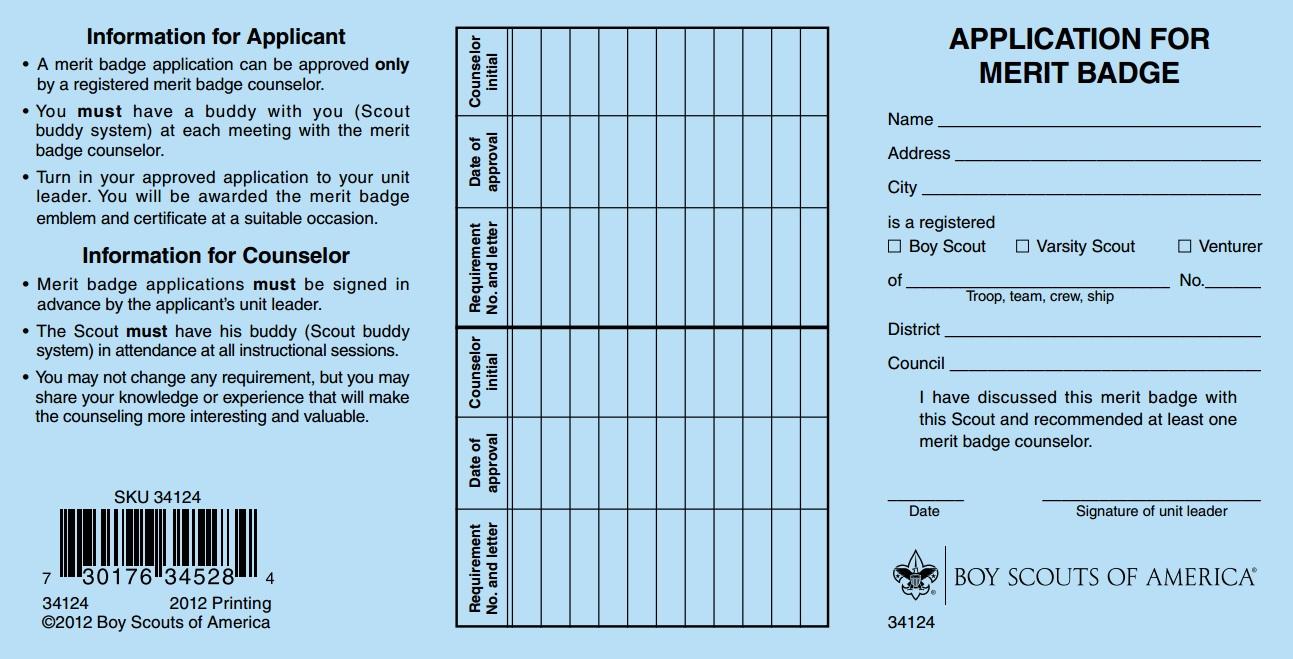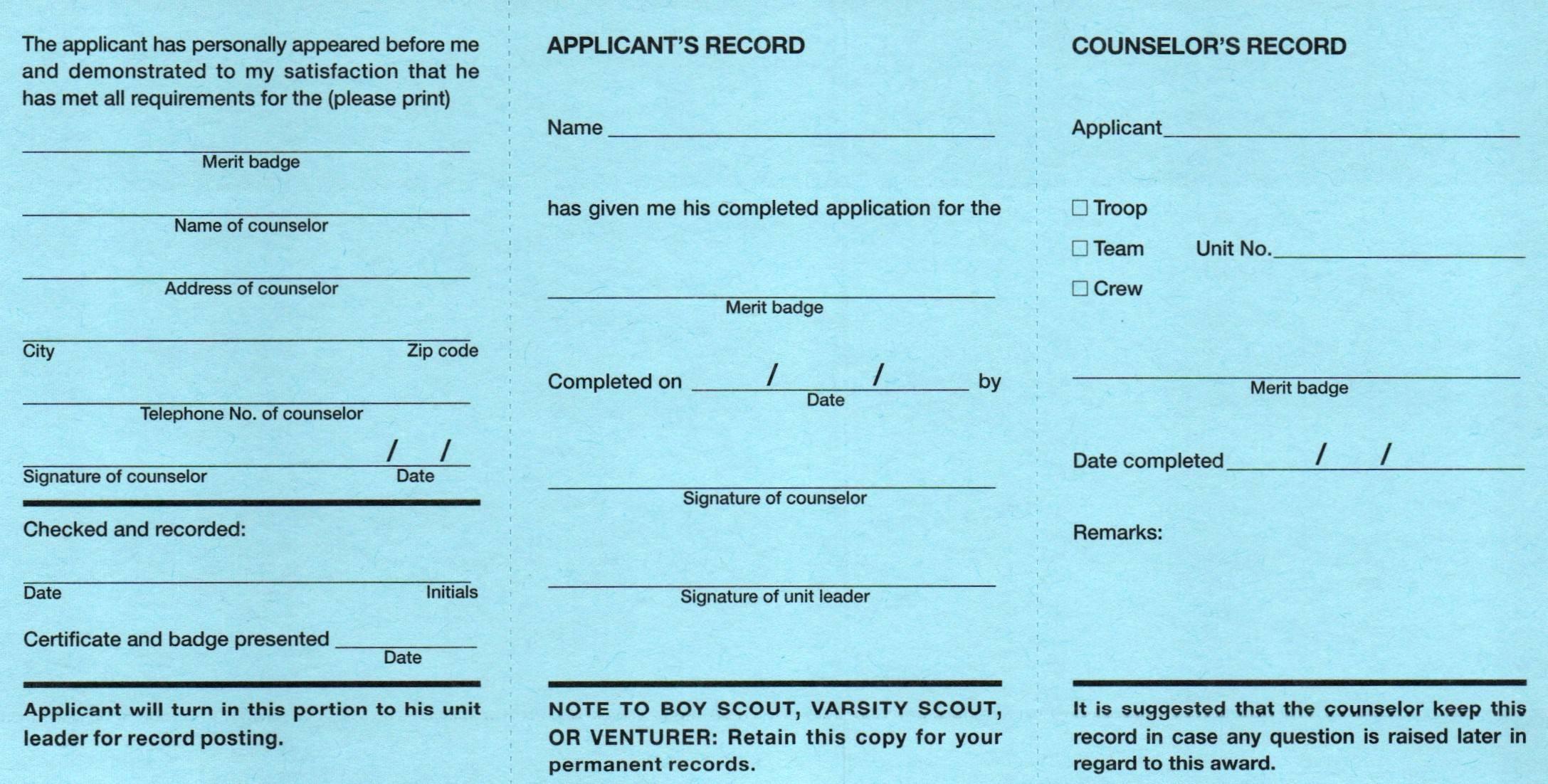You can learn about sports, crafts, science, trades, business, and future careers as you earn merit badges. There are more than 135 merit badges, and any Scout may earn any of these at any time. Check out the full listing of merit badges at Scouting.org.
Below are some frequently asked questions about earning merit badges:
Merit Badges
Merit badges are awarded to Scouts who complete additional requirements related to a specific topic. There are over 130 merit badges that cover many different topics from camping and first aid to robotics and game design.
The list of of all merit badges and their requirements can be found in the Scouts BSA Requirements book on Scouting.org. This is the BSA’s official repository for the most current requirements and supersedes any requirements included in the published merit badge pamphlets.
If a new edition of a merit badge pamphlet is introduced with updated requirements after the Scouts BSA Requirements book has been released, a Scout who is starting the badge may choose to follow either set of requirements until the end of the year. At the start of the new year, Scouts who are beginning must use only the new requirements.
If a Scout has already started working on a merit badge when a new edition of the pamphlet is introduced, they may continue to use the same pamphlet and fulfill the requirements therein to earn the badge. They need not start over again with the new pamphlet and revised requirements.
As of July 2022, a Scout must earn at least 14 of the following 18 “required” merit badges in order to become an Eagle Scout:
- First Aid
- Citizenship in the Community
- Citizenship in the Nation
- Citizenship in the World
- Citizenship in Society (new in July 2022)
- Communication
- Cooking
- Personal Fitness
- Emergency Preparedness OR Lifesaving
- Environmental Science OR Sustainability
- Personal Management
- Swimming OR Hiking OR Cycling
- Camping
- Family Life
In situations where there are multiple “required” merit badge options (i.e., 9, 10, 12 above), only one of the merit badges counts towards the 14 required merit badges. Any of the other merit badges would then count towards the nine additional merit badges needed to become an Eagle Scout. For example, if a Scout earns the Swimming, Hiking, and Cycling merit badges, one of those merit badges would count toward the 14 required merit badges and the other 2 would count towards the 9 other merit badges.
Merit Badge requirements may only be signed-off by a Merit Badge Counselor who has been registered with the Council for that Merit Badge.
Only adults of good character, age 18 or older, are approved to register as merit badge counselors. Merit badge counselors are expected to have the necessary skills and education to offer quality experiences in the badges they counsel. The intent is for Scouts to learn from those with an appropriate level of expertise.
It is important too, that potential counselors have a good rapport with unit leaders and Scout-age youth.
Instructions for registering as a Merit Badge Counselor can be found HERE.
Per the BSA’s Guide to Advancement:
That means that Leaders and Merit Badge Counselors are not permitted to add to, modify, or remove from the approved list of merit badge or rank requirements as published by the BSA. Some limited exceptions are permitted for Scouts with special needs.
REMEMBER: Advancement requirements must be passed as written. For example, if a requirement uses words like “show,” “demonstrate,” or “discuss,” then the leader / counselor should expect that the Scout show, demonstrate or discuss the requirement and would be appropriate if they rejected a completed worksheet as proof that the requirement had been completed. (Guide to Advancement 4.2.0.1)
Scouts should immediately inform the Scoutmaster, Troop Committee, or Council representative if leader or Merit Badge counselor takes any action that conflicts with the Guide to Advancement.
Before you start working on a merit badge, you should:
The “Blue Card” is a two-sided, tri-section document that is formally known as The Application For Merit Badge. It is an official Boy Scout of America document that serves as a record of progress toward completion of a merit badge. The Blue Card is the first thing you need when you decide you would like to earn a merit badge. Blue Cards will be available at every Troop meeting and Scouts are encouraged to keep a few extra blue cards in their Scout Handbook or notebook so they always have one available.
In the 2021 Guide to Advancement (section 7.0.0.2), Units are being encouraged to use other innovations such as Scoutbook or computer-generated spreadsheets to track advancement. The Troop and Moraine Trails Council are expected to accept these alternative forms of documentation as long as the documentation provides the information necessary to track and record the Scout’s progress.
Blue Cards must be completed before the Scoutmaster signs the card authorizing the Scout to begin working on the merit badge. You can find instructions for completing the blue card on THIS PAGE.
- give guidance on the wisdom of pursuing a selected badge,
- advise the Scout on how work might be approached and what may be encountered along the way.
- Provide the names and contact information for one or more approved counselors
Once you have completed the Blue Card and obtained the Scoutmaster’s approval, you are ready to start working on the merit badge. The following are the recommended next steps:
- Obtain a copy of the Merit Badge pamphlet and review it in detail. You will find that most of the requirements are thoroughly explained in the contents of the pamphlet.
- The Scout contacts the counselor while following youth protection requirements. >Even though Scouts may benefit from reviewing requirements with a merit badge counselor before getting to work, a Scout may begin the effort on any badge at any time after registering in Scouts BSA.
- The counselor considers any work toward requirements completed prior to the initial discussion with the unit leader. It is the counselor’s decision whether to accept work or activities completed prior to any meeting with the unit leader or the merit badge counselor. Common sense should prevail, however. For example: nights already camped as a Scout in Scouts BSA, or coins or stamps already collected, would count toward their respective badges.)
- The Scout, the Scout’s buddy, and the counselor meet (often several times).
- Partial progress is recorded as requirements are completed.
- The Scout finishes the requirements.
- The counselor approves completion.
Remember, advancement requirements must be passed as written. If, for example, a requirement uses words like “show,” “demonstrate,” or “discuss,” then that is what Scouts must do. Filling out a worksheet, for example, would not suffice. (Guide to Advancement 4.2.0.1)
Resources:
- Troop Library (via TroopTrack): A listing of the Merit Badge pamphlets in the Troop library and whether they are currently checked out. See the Troop Librarian to checkout or return a Merit Badge Book.
- Merit Badge Pamphlets (via ScoutShop.org): Scouts can also purchase physical and digital versions of the Merit Badge pamphlets from the BSA’s Scout Shop or at a local Scout Shop.
- Merit Badge Requirements and Workbooks (via usscouts.org): The US Scouting Service Project has created a series of Merit Badge workbooks to help Scouts organize notes, listen actively, and document their work. These workbooks can help you but you still need to read the merit badge pamphlet. The work space provided for each requirement should be used by the Scout to make notes for discussing the item with his counselor, not for providing the full and complete answers. Each Scout must do each requirement. Completing these worksheets may suffice where a requirement calls for something in writing, but this would not work for a requirement where the Scout must discuss, tell, show, or demonstrate, etc. Scouts are NOT required to use these learning aids in order to complete a merit badge.
Upon completion of a merit badge, the merit badge counselor will remove the third of the card labeled COUNSELOR’S RECORD and retain it for their records. The remaining two sections should be turned in to the Troop’s Advancement Chair or the Scoutmaster at the next Troop meeting. The Advancement Chair will then process your merit badge application and you will be awarded your patch at the next suitable occasion.
At that time, the third of the Blue Card labeled APPLICANT’S RECORD will be returned to the Scout for their records. Keep this card in a safe place and DO NOT throw it away. This card is the record that you have successfully earned the merit badge. Many Scouts keep the blue cards in baseball card pages in a binder.
Completing a Blue Card
Below you will find images of the front and back of the Blue Card. Click on the + icons to view the information you should enter into each of the areas. Scouts should fill in the Blue Card in the spots marked before presenting it to the Scoutmaster for a signature.
Blue Card Front

Write in your Name, Address, and City.
Check off Boy Scout
Write in Troop
Write in 457
Write in Washington's Trail
Write in Moraine Trails
Blue Card Back

Write in the name of the Merit Badge you would like to pursue
Write in the name of the Merit Badge you would like to pursue
Write in the name of the Merit Badge you would like to pursue
Write in your name
Write in your name
Check off Troop
Write in 457
The Scoutmaster or Advancement Chair will help you to identify a Merit Badge Counselor. Their name, address, and phone number can be written into the appropriate spot on the card. The Scoutmaster, Merit Badge Counselor, and Advancement Chair will complete the other portions of the Blue Card. Do not write in any of these areas.
